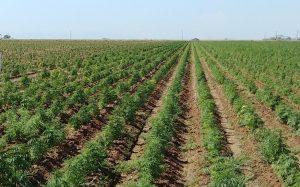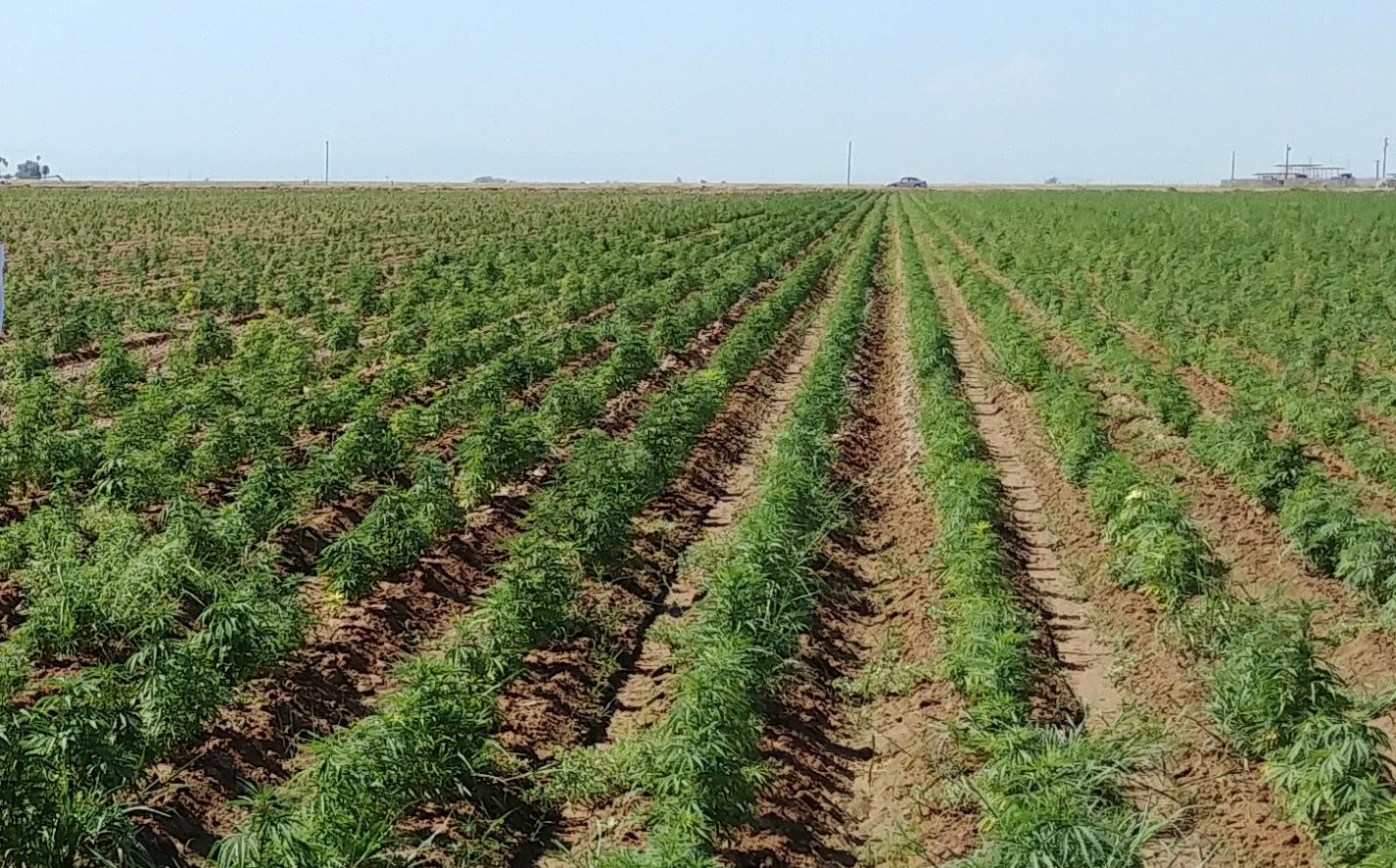
Hemp farmers have a number of choices and sources for the varieties they will plant in 2021. But if they’re electing to use seed-propagated varieties, there are several criteria that growers should consider in selecting genetics.
Jeremy Klettke, founder, CEO and head plant breeder at Davis Farms of Oregon in Portland, outlined basic requirements growers should watch for during the 2021 World Ag Expo based in Tulare, California, which was held virtually this year.
Total THC and CBD content
Ultimately, total THC will be the federal law for hemp genetics according to the U.S. Department of Agriculture’s final hemp rules scheduled to take effect next month. So growers should seek compliant genetics for the 2021 season.
“Focus on total THC … particularly if you are looking at a smokable flower market and want to take advantage of moving your product across state lines,” Klettke said.
Further, choosing total-THC compliant hemp varieties will ultimately provide growers peace of mind and allow them to focus on the many other aspects of farming involved in hemp production, Klettke said.
And it’s not unreasonable to expect that hemp genetics could be tested more than once, according to Klettke. For example, the state of Oregon, has adopted a rule for post-harvest testing requirements of any processed product, including trimmed flower, he said.
“I think just due to consumer responsibility, that will be the standard more and more going forward, that we won’t be so easily shipping a post-harvest product on a pre-harvest test report that we know is not really representative of the actual sample that’s being consumed,” Klettke said.
“If nothing else, consumer responsibility starts to push us in the direction where we’re providing the COA (certificate of analysis) on the representative sample to the consumer at the time that they’re purchasing the product.”
Likewise, weigh CBD-to-THC ratios as one of the qualifiers, as varieties with a 25 to 1 ratio are going to give growers the greatest potential for CBD and lower THC production, according to Klettke.
“That’s the way that we can see you end up with a true assayed, 8% to 9% CBD content while still remaining in total THC compliance without risking going over,” he said.
Feminization rate
Even when growers find seed genetics touted as 100% feminization rate, they should ask their genetics suppliers how many tests or sites they’re running and where.
“If you’re looking at a company that’s doing a hundred sites and telling you, ‘In a hundred sites, we had a hundred females and that’s our 100%,’ this is really not comprehensive enough to give you a clear idea,” Klettke said.
“Ideally, you want to see a thousand or more tests to give you that real percentile.”
The leaf or cotyledon sample from each seedling is placed into one well of an 88-well reaction plate and sent off to a laboratory for qPCR analysis, a molecular biology technique that allows for quantification of a targeted DNA molecule to determine whether plants are male or female.
Klettke told Hemp Industry Daily that the qPCR can provide details about the stability or hermaphroditic potential of the plant, as any seedling with a 2% chance or greater of herming will test as a male.
Testing can be cost prohibitive, as each of the samples or wells cost $7-$14, depending on the volume of sampling; however, there are more companies coming online that are able to test feminization rate and with that, the cost per test should come down, he said.
Germination period and seed labeling
Testing germination period and rate can be done internally, but there are state certified laboratories that specialize in germination rate and parody testing.
Growers should make sure their seed vendors are having their seed verified through an AOSA (Association of Official Seed Analysts) or AOSCA (Association of Official Seed Certifying Agencies) certified lab, Klettke said.
Additionally, look for compliant seed labeling, which will include the period of testing, lot numbers, germination, feminization, state licensing and other information on the tag that will show growers that their supplier is complying with legal standards set forth under the U.S. Federal Seed Act.
“That’s a good threshold for you to be able to determine the level at which your seed provider is operating,” Klettke said.
Yield potential and planting density
Not all varieties yield the same and not all genetics are created equal, Klettke said.
“Some of these varieties are apically dominant and have autoflower introduced to them, so they are going to flower semi-regardless of photoperiod,” Klettke said.
“That means they will only get to a certain vegetative size before they start to flower when they reach sexual maturity.”
Plant breeders and growers have learned that topping a plant will increase yield potential significantly, but that also creates additional labor.
Selecting varieties that naturally break apical dominance, meaning that the plant promotes lateral branches rather than pushing up one primary flower and some minor lateral branches, will increase yield potential without requiring growers to top plants.
Planting density is another way to increase yield potential. Plants that have different growth structures, such as thinner and later leaves, will allow better light penetration and better air movement, which allows growers to plant in certain climates and regions at a higher planting density.
Playing with the variability of the planting density can give growers a potentially dramatic yield increase, but it also depends on genetic selection, Klettke said. Many of the varieties on the market are hybrids, and depending on the breeding, can lean toward sativa or indica growth traits.
“When you take an indica-leaning plant that has broad leaf structure and a lot of foliage, that just doesn’t allow moisture to dissipate, so it can be prone to mildew, it doesn’t allow good light strike, and it certainly doesn’t allow good wind movement, so that requires your planning density to be a lot less,” Klettke said.
Climate requirements
Select varieties with agronomic traits that are well-suited to their microclimate, bioregion and photoperiod, Klettke advised.
“Make sure that you’re going to be able to get them out of the field or that they’re tolerant to a temperature that meets or exceed that historical killing frost moment that you have,” he said.
“The same goes for mold potential – make sure that if you’re in an area where it’s raining constantly in October, that you are looking at varieties that are going to be mold resistant, so you can get them out of the field without losing your crop.”
Klettke said there is nothing worse than for growers to get to the end of their season, and finding out they have Botrytis and losing their crop, so he advises farmers to talk to their genetics providers about disease resistance and look at objective university field trial data.
“That’s going to give you the cleanest picture of how these plants are going to perform in your region,” he said.
Learn more about hemp genetics and the commercial varieties available on the market in the 2021 Hemp Variety Yearbook.
Laura Drotleff can be reached at [email protected]

